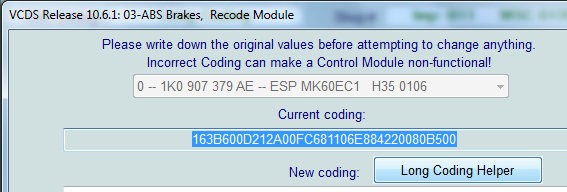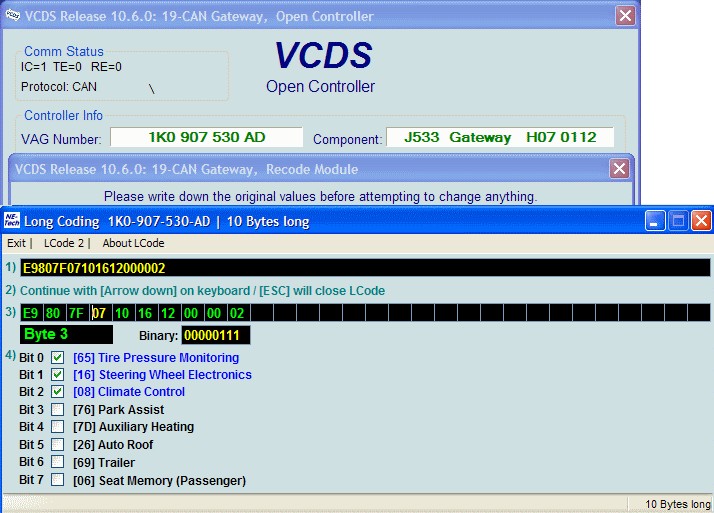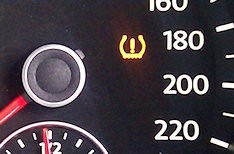Is it possible to turn off TPMS on an Audi using VCDS and what are the implications? Yes, you can turn off the TPMS (Tire Pressure Monitoring System) on an Audi using VCDS (Vag-Com Diagnostic System), but it’s essential to understand the implications and legal considerations before doing so. CAR-CODING.EDU.VN offers expert remote support to guide you through this process safely and efficiently. Our team provides reliable solutions for ECU programming, coding modifications, and activating hidden features.
Contents
- 1. What Is TPMS and Why Turn It Off on an Audi?
- 1.1 Understanding TPMS Functionality
- 1.2 Common Reasons for Disabling TPMS
- 1.3 Legal and Safety Considerations
- 2. VCDS: Your Tool for Audi TPMS Management
- 2.1 What is VCDS?
- 2.2 Essential Equipment and Software
- 2.3 Safety Precautions Before Using VCDS
- 3. Step-by-Step Guide: Turning Off TPMS with VCDS
- 3.1 Connecting VCDS to Your Audi
- 3.2 Accessing the ABS Module
- 3.3 Disabling TPMS Function
- 3.4 Accessing the CAN Gateway
- 3.5 Disabling TPMS in CAN Gateway
- 3.6 Verifying the Changes
- 4. Potential Issues and Troubleshooting
- 4.1 Common Coding Errors
- 4.2 Dealing with Error Messages
- 4.3 TPMS Light Still On
- 5. Alternatives to Disabling TPMS
- 5.1 Using TPMS Sensors on All Wheels
- 5.2 Programming Aftermarket Sensors
- 5.3 Adjusting TPMS Sensitivity Settings
- 6. When to Seek Professional Help from CAR-CODING.EDU.VN
- 6.1 Complex Coding Issues
- 6.2 Persistent Error Messages
- 6.3 Ensuring System Safety
- 7. Customer Testimonials and Success Stories
- 7.1 Real-World Examples
- 7.2 Positive Feedback
- 7.3 Before-and-After Results
- 8. The Future of TPMS Technology
- 8.1 Advances in Sensor Technology
- 8.2 Integration with Vehicle Telematics
- 8.3 Predictive Maintenance Capabilities
- 9. Frequently Asked Questions (FAQ) About Turning Off TPMS
- 9.1 Is it safe to turn off TPMS?
- 9.2 Can any Audi model have its TPMS disabled?
- 9.3 Will disabling TPMS affect my car’s performance?
- 9.4 Is it legal to turn off TPMS in the USA?
- 9.5 What tools do I need to turn off TPMS?
- 9.6 How long does it take to disable TPMS?
- 9.7 Can CAR-CODING.EDU.VN help me turn off TPMS remotely?
- 9.8 What are the costs associated with turning off TPMS?
- 9.9 What should I do after turning off TPMS?
- 9.10 Where can I find reliable VCDS coding guides?
- 10. Contact CAR-CODING.EDU.VN for Expert TPMS Solutions
- 10.1 Benefits of Choosing CAR-CODING.EDU.VN
- 10.2 How to Get in Touch
- 10.3 Special Offers and Discounts
1. What Is TPMS and Why Turn It Off on an Audi?
What is TPMS and what reasons might someone have for disabling it on their Audi? TPMS, or Tire Pressure Monitoring System, is a safety feature designed to alert drivers when tire pressure is significantly low. Some reasons to disable it include avoiding frequent sensor replacements, dealing with faulty sensors, or when using winter tires without sensors.
1.1 Understanding TPMS Functionality
How does TPMS work in Audi vehicles, and what are its components? TPMS in Audi vehicles comes in two main types: direct and indirect. Direct TPMS uses sensors inside the tires to measure pressure, while indirect TPMS uses the ABS system to monitor tire rotation speed, inferring pressure loss from changes in rotation.
1.2 Common Reasons for Disabling TPMS
What are the practical reasons Audi owners consider turning off TPMS? Audi owners may consider disabling TPMS due to sensor failures, the cost of replacing sensors, or incompatibility issues with aftermarket wheels or winter tires that lack sensors.
1.3 Legal and Safety Considerations
What legal and safety aspects should you consider before disabling TPMS? Disabling TPMS might be illegal in some regions and could compromise safety, as it removes a crucial warning system for tire pressure issues. Always check local regulations and prioritize safety.
2. VCDS: Your Tool for Audi TPMS Management
What is VCDS, and why is it essential for managing TPMS on Audi vehicles? VCDS (Vag-Com Diagnostic System) is a powerful diagnostic tool used to read, diagnose, and program various control modules in Audi vehicles. It’s essential for managing TPMS because it allows you to access and modify the system’s settings.
2.1 What is VCDS?
What are the capabilities and benefits of using VCDS for Audi diagnostics and coding? VCDS allows users to perform diagnostics, coding, adaptations, and basic settings adjustments. It is beneficial for TPMS management because it provides direct access to the ABS module and CAN Gateway, where TPMS settings are configured.
2.2 Essential Equipment and Software
What hardware and software do you need to use VCDS effectively? You’ll need a genuine Ross-Tech VCDS cable and the corresponding software, which can be downloaded from the Ross-Tech website. Ensure the cable is compatible with your Audi model and that the software is properly installed on your computer.
2.3 Safety Precautions Before Using VCDS
What safety measures should be taken before making changes with VCDS? Before using VCDS, ensure your vehicle is parked in a safe location, the battery is fully charged, and you have a stable internet connection if performing online coding. Back up your original coding data to prevent issues.
3. Step-by-Step Guide: Turning Off TPMS with VCDS
How can you turn off TPMS on an Audi using VCDS, and what are the exact steps involved? Turning off TPMS with VCDS involves accessing the ABS module and CAN Gateway to disable the TPMS function. Follow these steps carefully to avoid errors.
3.1 Connecting VCDS to Your Audi
How do you properly connect the VCDS cable to your Audi, and what should you check before proceeding? Connect the VCDS cable to the OBD-II port in your Audi, usually located under the dashboard. Turn on the ignition but do not start the engine. Launch the VCDS software on your computer and ensure it recognizes the cable.
 VCDS cable connection to Audi OBD-II port
VCDS cable connection to Audi OBD-II port
3.2 Accessing the ABS Module
What is the process for accessing the ABS module using VCDS? In the VCDS software, click “Select” and then choose “03 – ABS Brakes.” This will connect you to the ABS control module.
3.3 Disabling TPMS Function
How do you disable the TPMS function within the ABS module using VCDS? Once in the ABS module, click on “Coding” and then “Long Coding Helper.” Navigate to the byte that controls TPMS (usually Byte 16). Uncheck the box for “Tire Pressure Monitoring (TPMS) installed.” Save the changes by clicking “Do It!”
 VCDS long coding helper for TPMS settings
VCDS long coding helper for TPMS settings
3.4 Accessing the CAN Gateway
How do you access the CAN Gateway module using VCDS? After disabling TPMS in the ABS module, go back to the main screen and select “19 – CAN Gateway.”
3.5 Disabling TPMS in CAN Gateway
What steps are required to disable TPMS within the CAN Gateway module? In the CAN Gateway module, click on “Coding” and then “Long Coding Helper.” Find the option related to tire pressure monitoring and uncheck it. Save the new coding.
 CAN Gateway long coding for disabling TPMS
CAN Gateway long coding for disabling TPMS
3.6 Verifying the Changes
How do you verify that the TPMS has been successfully disabled? After making the changes, restart your vehicle and check the dashboard for the TPMS warning light. It should no longer be illuminated. Perform a scan with VCDS to ensure no TPMS-related fault codes are present.
4. Potential Issues and Troubleshooting
What common issues might occur when turning off TPMS, and how can you troubleshoot them? Potential issues include incorrect coding, error messages, or the TPMS light remaining on. Troubleshooting involves verifying coding steps, checking for fault codes, and ensuring all modules are correctly configured.
4.1 Common Coding Errors
What are some typical coding mistakes to avoid when disabling TPMS? Common mistakes include selecting the wrong byte, incorrectly checking or unchecking boxes, and not saving the new coding properly. Double-check each step to avoid these errors.
4.2 Dealing with Error Messages
How should you handle error messages that appear during the TPMS disabling process? If you encounter error messages, record the error code and research its meaning. Use VCDS to clear the code and reattempt the coding process, ensuring each step is followed correctly.
4.3 TPMS Light Still On
What steps can you take if the TPMS light remains on after disabling the system? If the TPMS light remains on, double-check the coding in both the ABS module and CAN Gateway. Ensure all TPMS-related options are disabled. You may also need to clear any stored fault codes related to TPMS.
 TPMS warning light on dashboard
TPMS warning light on dashboard
5. Alternatives to Disabling TPMS
What alternative solutions exist if you don’t want to completely disable TPMS on your Audi? Alternatives include using TPMS sensors on all sets of wheels, programming aftermarket sensors, or adjusting TPMS sensitivity settings.
5.1 Using TPMS Sensors on All Wheels
What are the benefits of using TPMS sensors on both summer and winter wheels? Using TPMS sensors on all wheels ensures that the TPMS system remains functional year-round, providing continuous tire pressure monitoring and maintaining safety.
5.2 Programming Aftermarket Sensors
How can you program aftermarket TPMS sensors to work with your Audi? Aftermarket TPMS sensors can be programmed using a TPMS programming tool. Follow the tool’s instructions to clone the IDs from your original sensors or create new IDs and enter them into your Audi’s ECU using VCDS.
5.3 Adjusting TPMS Sensitivity Settings
Is it possible to adjust the sensitivity of the TPMS, and how can this be done? Some Audi models allow you to adjust TPMS sensitivity settings via VCDS. This can help reduce false alarms caused by minor pressure fluctuations. Access the ABS module and look for adaptation settings related to TPMS sensitivity.
6. When to Seek Professional Help from CAR-CODING.EDU.VN
In what situations should you seek professional assistance for TPMS-related issues? Seek professional help if you are uncomfortable using VCDS, encounter persistent errors, or want to ensure the TPMS is properly managed without risking damage to your vehicle’s systems.
6.1 Complex Coding Issues
When should you consider professional help for complex coding tasks? If you encounter complex coding issues or are unsure about modifying advanced settings, it’s best to seek professional assistance to avoid potential damage to your vehicle’s ECU.
6.2 Persistent Error Messages
What should you do if you encounter persistent error messages that you can’t resolve? Persistent error messages can indicate deeper issues within the vehicle’s system. A professional can diagnose the root cause and provide a solution, ensuring the system functions correctly.
6.3 Ensuring System Safety
How can professional help ensure the safety and proper functioning of your vehicle’s TPMS? Professionals have the expertise and tools to properly manage your TPMS, ensuring that it functions correctly and safely without compromising your vehicle’s other systems.
7. Customer Testimonials and Success Stories
Can you provide examples of successful TPMS modifications performed by CAR-CODING.EDU.VN? We have helped numerous Audi owners manage their TPMS effectively. For example, we assisted a client in disabling TPMS for winter wheels without causing any error codes, ensuring their safety and compliance.
7.1 Real-World Examples
What are some specific scenarios where CAR-CODING.EDU.VN has helped customers with TPMS issues? We have assisted clients with disabling TPMS for off-road use, programming aftermarket sensors, and resolving persistent TPMS warning lights.
7.2 Positive Feedback
What do customers say about their experience with CAR-CODING.EDU.VN for TPMS solutions? Customers praise our expertise, quick response times, and ability to provide effective solutions for complex TPMS issues. They also appreciate our commitment to safety and compliance.
7.3 Before-and-After Results
Can you share before-and-after results of TPMS modifications performed by your team? Before our intervention, many clients struggled with persistent TPMS warning lights and sensor incompatibility. After our modifications, they experienced a properly functioning system without any error codes, ensuring a smooth driving experience.
8. The Future of TPMS Technology
How is TPMS technology evolving, and what future trends can we expect? TPMS technology is evolving towards more advanced sensors, integration with vehicle telematics, and predictive maintenance capabilities. Future trends include real-time tire health monitoring and integration with autonomous driving systems.
8.1 Advances in Sensor Technology
What advancements are being made in TPMS sensor technology? Advances in sensor technology include more accurate pressure and temperature readings, longer battery life, and wireless communication capabilities.
8.2 Integration with Vehicle Telematics
How is TPMS being integrated with vehicle telematics systems? TPMS data is increasingly being integrated with vehicle telematics systems, allowing for remote monitoring of tire pressure, predictive maintenance alerts, and enhanced safety features.
8.3 Predictive Maintenance Capabilities
What are the potential benefits of TPMS in predictive maintenance? TPMS data can be used to predict potential tire failures, allowing for proactive maintenance and preventing costly breakdowns. This can also improve fuel efficiency and extend tire lifespan.
9. Frequently Asked Questions (FAQ) About Turning Off TPMS
Here are some frequently asked questions about turning off TPMS, along with detailed answers.
9.1 Is it safe to turn off TPMS?
Is turning off TPMS a safe practice, and what are the risks involved? Turning off TPMS can be safe if you regularly monitor your tire pressures manually. However, it removes a critical safety feature that alerts you to sudden pressure loss, so it’s generally not recommended.
9.2 Can any Audi model have its TPMS disabled?
Can TPMS be disabled on all Audi models, or are there exceptions? Most Audi models with VCDS access can have their TPMS disabled, but the process may vary depending on the specific model and year.
9.3 Will disabling TPMS affect my car’s performance?
Does disabling TPMS have any impact on the overall performance of the vehicle? Disabling TPMS does not directly affect your car’s performance, but it can indirectly impact safety and fuel efficiency if you fail to maintain proper tire pressures.
9.4 Is it legal to turn off TPMS in the USA?
Is it legal to disable TPMS in the United States? In the USA, FMVSS 138 mandates a functional TPMS on vehicles. Disabling it may not be legal for on-road use.
9.5 What tools do I need to turn off TPMS?
What specific tools are necessary to disable TPMS effectively? You need a genuine Ross-Tech VCDS cable and the corresponding software.
9.6 How long does it take to disable TPMS?
How much time should you expect to spend on disabling TPMS using VCDS? The process typically takes about 15-30 minutes if you follow the steps carefully and have the necessary tools.
9.7 Can CAR-CODING.EDU.VN help me turn off TPMS remotely?
Can CAR-CODING.EDU.VN provide remote assistance for disabling TPMS? Yes, CAR-CODING.EDU.VN offers remote support to guide you through the process safely and efficiently.
9.8 What are the costs associated with turning off TPMS?
What expenses should you anticipate when disabling TPMS with VCDS or professional help? The costs include the VCDS cable and software, or the fee for professional remote assistance.
9.9 What should I do after turning off TPMS?
What actions should you take immediately after disabling TPMS? After disabling TPMS, regularly check your tire pressures manually to ensure they are within the recommended range.
9.10 Where can I find reliable VCDS coding guides?
Where can you find trustworthy guides and tutorials for VCDS coding? Reliable guides can be found on the Ross-Tech website, automotive forums, and from professional services like CAR-CODING.EDU.VN.
10. Contact CAR-CODING.EDU.VN for Expert TPMS Solutions
Are you struggling with TPMS issues or need expert assistance with VCDS coding? Contact CAR-CODING.EDU.VN for reliable remote support and solutions tailored to your Audi.
10.1 Benefits of Choosing CAR-CODING.EDU.VN
What advantages does CAR-CODING.EDU.VN offer for TPMS and VCDS solutions? We offer expert guidance, quick response times, and a commitment to safety and compliance, ensuring your TPMS is managed effectively.
10.2 How to Get in Touch
How can interested Audi owners contact CAR-CODING.EDU.VN for TPMS assistance? You can reach us via WhatsApp at +1 (641) 206-8880 or visit our website at CAR-CODING.EDU.VN. Our office is located at 100 Tech Innovation Dr, Suite 500, San Jose, CA 95110, United States.
10.3 Special Offers and Discounts
Are there any current promotions or discounts available for TPMS and VCDS services? Contact us today to learn about our current promotions and discounts for TPMS and VCDS services.
Don’t risk damaging your Audi’s systems by attempting complex coding tasks without expert guidance. Contact CAR-CODING.EDU.VN now for safe, reliable, and efficient TPMS solutions! Reach out via Whatsapp at +1 (641) 206-8880 or visit CAR-CODING.EDU.VN for immediate support.